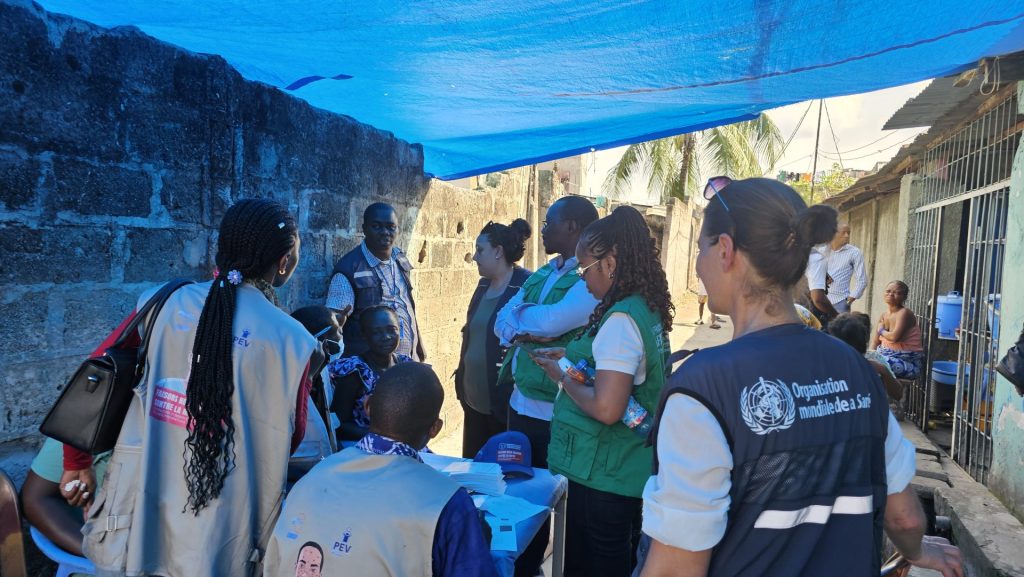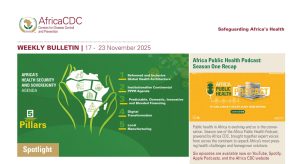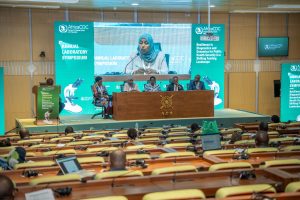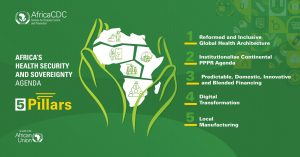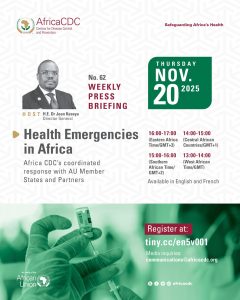Rolling back the ongoing mpox outbreak across Africa rests on a deceptively simple principle: tracing every case and isolating every contact – from casual interactions to close physical contact.
Yet even as African countries gain experience in identifying and confirming mpox infections, contact tracing remains one of the most challenging links in surveillance, ring vaccination and outbreak control.
“Surveillance is the eyes and ears of public health response,” said Professor Yap Boum II, Deputy Incident Manager of the Mpox Incident Management Support Team (IMST), co-led by the Africa Centres for Disease Control and Prevention (Africa CDC) and the World Health Organization (WHO).
The IMST has brought together over 28 partners and coordinates the fight against mpox across all 27 countries now reporting active cases, the first time such a ‘one plan, one budget, one team’ approach has been adopted to tackle a major disease outbreak in Africa.
A year into the current outbreak, which to date has cost 270 lives from 54,300 confirmed cases, Africa is transitioning from the emergency phase of the outbreak to routine mpox surveillance, reporting and integrated response. This shift demands adherence to international standards while crafting strategies to confront core realities – including stigma, cross-border movement and gaps in case management.
“We must proactively identify mpox hotspots, pre-position essential tools and resources, and deploy targeted contact tracing systems to contain the spread,” said Dr Kyeng Mercy, Surveillance Pillar Lead at the Continental IMST, emphasising the importance of maintaining active surveillance systems. “The lack of relevant data hampers decision-making.”
Dr Kyeng spoke as health experts from African Union Member States, the WHO, the International Federation of the Red Cross and Red Crescent Societies, and other partners gathered in Accra, Ghana, to align on a stronger, updated surveillance strategy that meets global standards and supports timely, coordinated action. Central to these discussions was the recognition of the vital role played by community health workers, who form the backbone of Africa’s surveillance systems.
In all of this, contact tracing is key. However, it is about more than identifying names on a list. It is about finding everyone who has been in contact with an infected person, monitoring them for symptoms, and offering vaccination or treatment before they fall ill. In practice, this has not proven easy.
Despite its critical role, surveillance remains largely invisible and in need of much more funding to scale up interventions, including the deployment of community health workers and the digitisation of surveillance systems at all levels. “Unlike a new road or railway, surveillance is not a tangible monument — it is the silent defence system of our health,” said Dr Kyeng. “Because it is unseen, it is chronically undervalued and underfunded by political leaders. They cannot use it to say what they have done. We therefore need to be very strategic and show the impact of surveillance in our appeal for funds.”
Contact tracing across Africa is mainly carried out by community health workers, who form the backbone of the continent’s surveillance network. They go door-to-door, following up on alerts, tracing contacts and monitoring symptoms — often with little pay and limited resources.
In countries such as the Democratic Republic of the Congo (DRC), Sierra Leone, Uganda and Burundi, investments in these frontline workers are paying off, with communities reporting fewer cases where local follow-up systems are in place.
But challenges remain. “How do you identify contacts when the host has been in a market or on a bus?” asked Dr Michèle Muteba from the WHO. The challenge is compounded when those infected are reluctant to disclose partners or movements — especially given that two of the five mpox sub-types are sexually transmitted. For many, fear of stigma outweighs the drive to report truthfully.
Beyond stigma, the logistics of contact tracing are punishing. Volunteers often lack transportation or airtime to follow up with contacts. Laboratory testing is concentrated in national capitals, creating delays in confirmation and data entry.
“When there is no funding, countries will do passive surveillance, and this means we will miss cases,” warned Dr Muteba. “We need active surveillance, supported by community workers and laboratories that can process samples quickly.”
In the DRC – the country worst affected by mpox, with 123 confirmed deaths from 31,000 cases – data sharing remains relatively strong, but laboratory bottlenecks persist. Co-infections further complicate the picture. Around 28 percent of mpox cases in DRC are also HIV-positive, making clinical management and surveillance more complex.
To address these challenges, the DRC has established a comprehensive surveillance and contact tracing system. Health workers, community leaders and traditional healers help identify suspected cases and report alerts. Once a case is confirmed, teams quickly begin contact tracing and apply ring vaccination to prevent further spread. These efforts have helped reduce mpox hotspots and improve outbreak control.
Despite progress, problems remain. Transporting laboratory samples is slow, and some communities are hesitant to cooperate. Data systems are not always interoperable, and decision-making is often too centralised. To improve, the DRC is focusing on high-risk areas, keeping laboratories active in key zones, and working to make mpox surveillance part of everyday health services by the end of 2025.
“We’re integrating HIV and mpox testing to make sure we don’t miss co-infections,” said a health expert from the DRC. Uganda has reported similar challenges, with most mpox deaths linked to HIV co-infection — often among patients unaware of their status.
Surveillance methods vary, including event-based surveillance that relies on alerts from communities or the media, community-based surveillance using local volunteers, and cross-border surveillance that tracks infections between countries. Each has both value and limits.
Professor Yap Boum spoke for many when he suggested reviewing the existing threshold of tracing up to 20 contacts per confirmed case, arguing that such a metric may be unrealistic for Africa. But there is no shortage of ideas on how to turn the situation around.
For example, in Malawi – with one death from 121 confirmed cases – the authorities have developed a risk-based system categorising contacts as high, medium and low risk, enabling resources to be allocated more effectively. Some countries are exploring digital solutions, encouraged by successes in South Korea and elsewhere, which utilised mobile-based tracing to efficiently identify contacts during the COVID-19 pandemic.
In Burundi, which has recorded one death from 4,480 cases, community volunteers are central to mpox surveillance, but they still report alerts manually. “If these volunteers could feed data directly into the Ministry of Health’s digital system, confirmation times would drop from days to less than 48 hours,” said Martine Nkurikiye, Senior Health Officer with the IFRC in Bujumbura. This delay highlights the need for better digital integration to speed up response times.
Community health workers and Red Cross volunteers have been key to identifying suspected cases, referring them to health facilities, and tracing contacts. Using mobile phones and basic tools, they help detect and report cases quickly. Event-based surveillance, supported by a toll-free hotline, adds another layer of real-time alerts. Surveillance also covers border areas, where teams monitor travellers and work with local networks to spot cases among displaced populations.
“Data management is the backbone of surveillance,” added Dr Muteba. “Without harmonised systems, fragmented data makes an effective response almost impossible.”
Mobility across porous borders remains a major driver of transmission. The Clade 1b strain has spread between Burundi, Uganda, Rwanda and Kenya, raising questions about the effectiveness of cross-border tracing.
Participants in the Accra meeting recommended standardising mpox screening and referral protocols at points of entry, training border officials, and engaging local communities in surveillance through strengthened risk communication and community engagement.
While external partners continue to support surveillance, countries are increasingly aware that reliance on donor funding is unsustainable. “We must mobilise domestic resources to sustain our surveillance systems,” urged Dr Kyeng. “If we want resilient systems, we must own and finance them ourselves.”
The meeting in Accra concluded with a focus on integrating mpox surveillance into One Health approaches, including animal surveillance and examining the less visible aspects of contact tracing, from behavioural dynamics to data flows.
Ultimately, the success of Africa’s mpox response depends on the often-unseen work of its community health workers. Surveillance may not be visible, but it remains the bedrock of every effective public health response. Without investment, data integrity and community trust, tracing the invisible chains of mpox transmission will remain an uphill battle.

